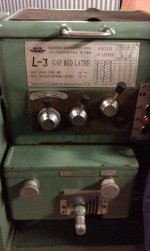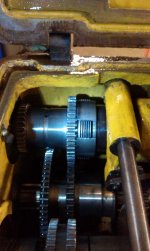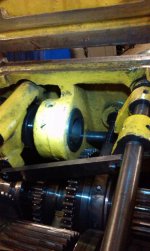Bryce.R
Aluminum
- Joined
- May 15, 2011
- Location
- Toowoomba QLD Australia
Hello all. Recently purchased a lathe and gave it its first decent run yesterday only to find out that it apparently has an inbuilt smoke machine in the gearbox, otherwise known as a clutch.
What a bargain right?
So my question is what exactly is wrong? Clutch assembly was boiling hot when I stopped the lathe and there was plenty of smoke. How do I fix?




What a bargain right?
So my question is what exactly is wrong? Clutch assembly was boiling hot when I stopped the lathe and there was plenty of smoke. How do I fix?





